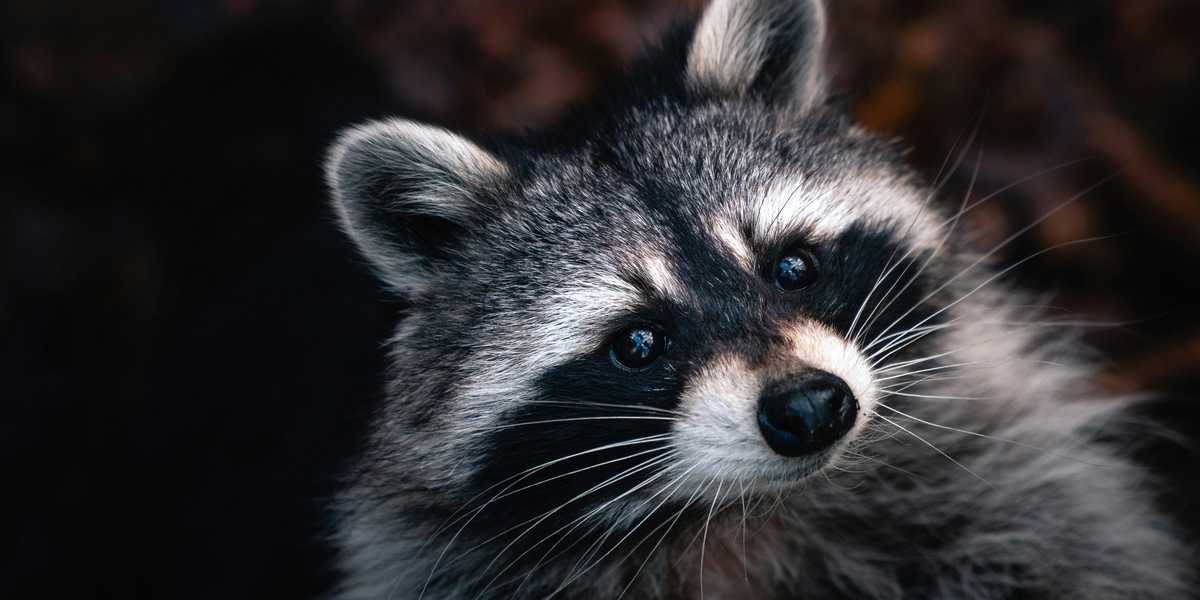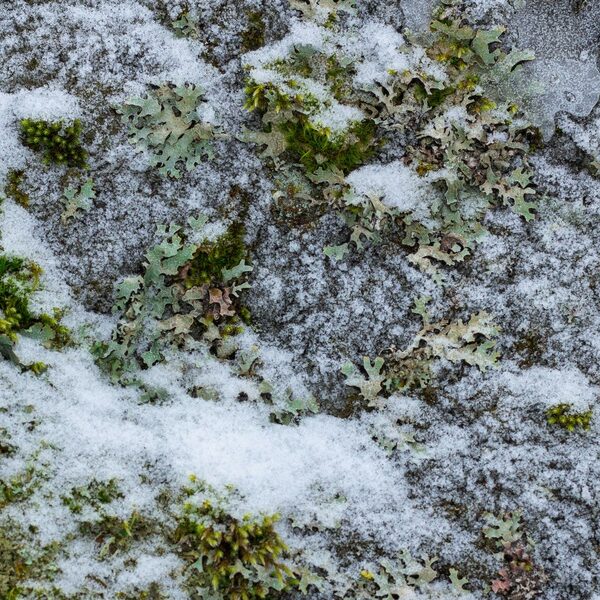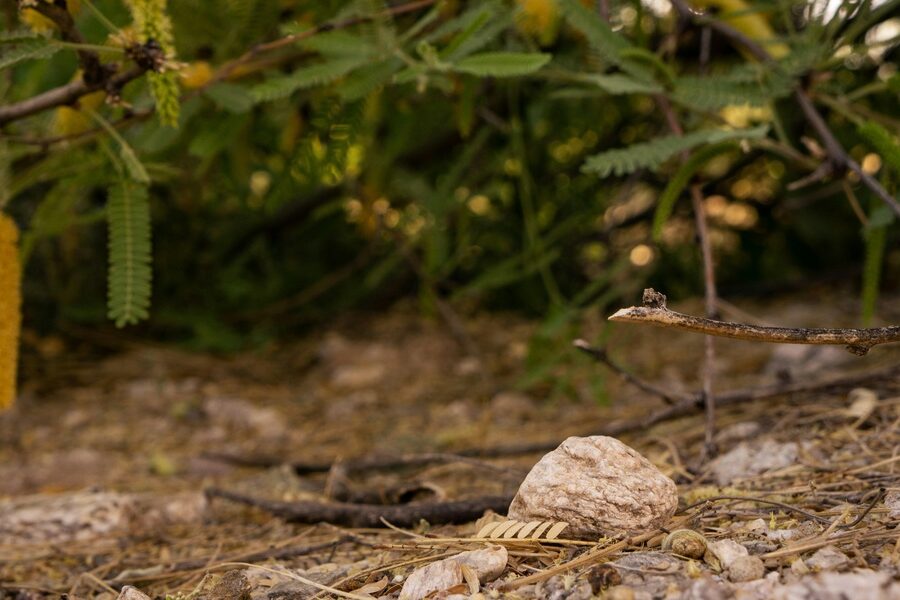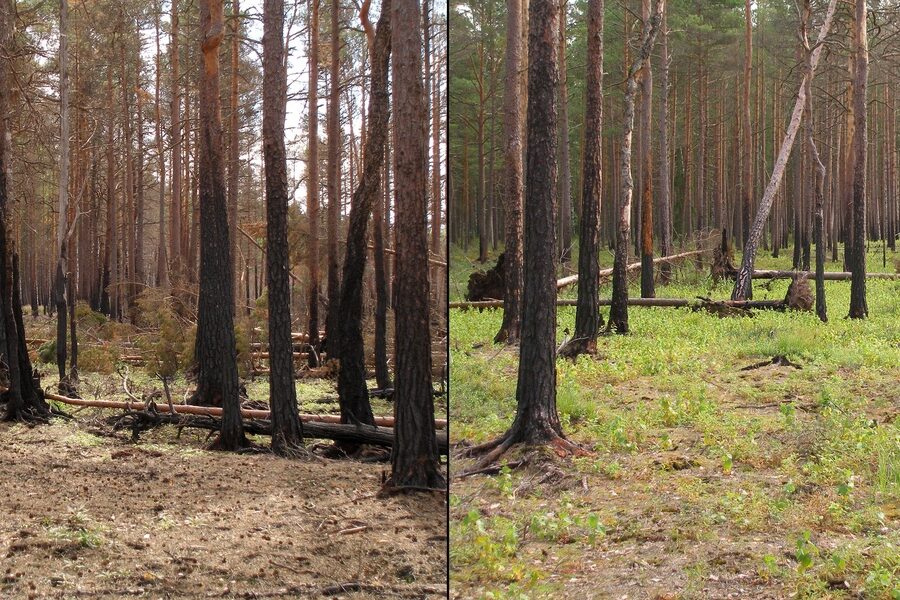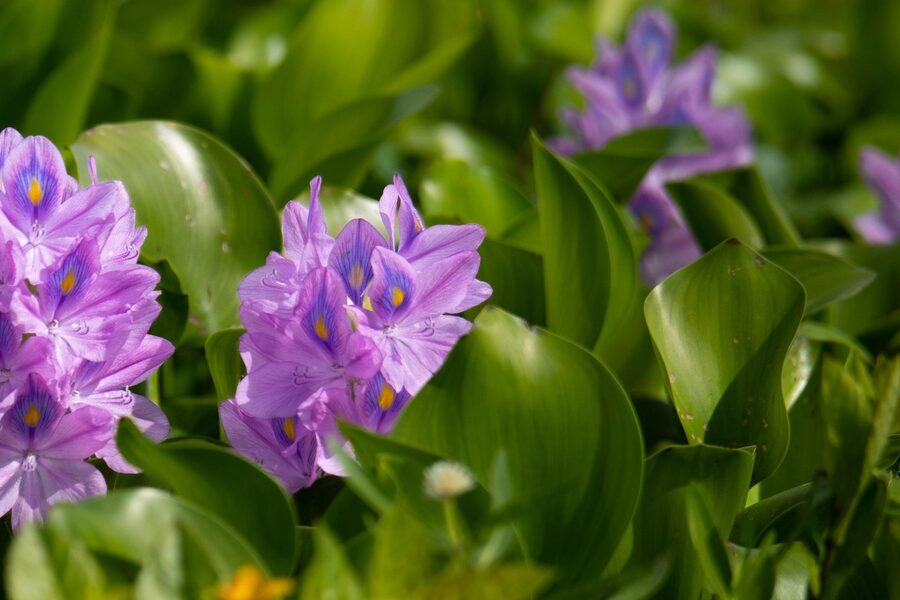Forests and woodland edges host a mix of birds, mammals and other creatures that shape the understory and the food web. Spotting who eats both plants and animals gives useful clues about seasonal behavior, seed dispersal and how species interact with human spaces.
There are 33 forest omnivores, ranging from American Crow to Wild Turkey. For each species, you’ll find below Scientific name,Range,Diet — compact details to help you identify and compare what they eat and where they live, which you’ll find below.
How can I tell if an omnivore is active in my patch of woods?
Look for tracks, droppings with seeds or insect parts, torn fruit or dug-up soil, distinctive calls, and direct sightings at dawn or dusk; motion-activated cameras and checking feeders or compost piles are especially reliable ways to confirm presence.
Which species are most likely to cause problems for gardens or poultry, and what helps reduce conflicts?
Crows, raccoons, opossums and wild turkeys commonly damage crops or raid coops; secure compost, use poultry-proof housing, remove food attractants, and apply netting or fencing to vulnerable beds to lower encounters.
Forest Omnivores
| Name | Scientific name | Range | Diet |
|---|---|---|---|
| Black Bear | Ursus americanus | North America, from Alaska to Mexico in forested regions. | Berries, nuts, grasses, insects, fish, fawns, and carrion; highly seasonal. |
| Grizzly Bear | Ursus arctos horribilis | Northwestern North America, including temperate forests and alpine tundra. | Salmon, roots, berries, insects (especially moths), small mammals, and carrion. |
| Sun Bear | Helarctos malayanus | Tropical forests of Southeast Asia. | Insects (termites, ants), larvae, honey, fruit, and small vertebrates. |
| Wild Boar | Sus scrofa | Native to Eurasia and North Africa; introduced worldwide in forest and woodland habitats. | Roots, acorns, nuts, berries, fungi, worms, insects, eggs, and carrion. |
| Red River Hog | Potamochoerus porcus | Rainforests and wetlands of West and Central Africa. | Roots, fruits, seeds, insects, eggs, and small animals found by rooting. |
| Collared Peccary | Pecari tajacu | Forests and scrublands from the Southwestern U.S. to northern Argentina. | Fruits, roots, tubers, cacti, insects, and occasionally small vertebrates. |
| Chimpanzee | Pan troglodytes | Forests and woodlands of tropical Central and West Africa. | Primarily fruit, but also leaves, insects, eggs, and meat from hunting small monkeys. |
| Japanese Macaque | Macaca fuscata | Forests across the main islands of Japan. | Fruits, seeds, leaves, insects, fungi, and tree bark. |
| White-faced Capuchin | Cebus imitator | Tropical forests of Central America. | Fruits, nuts, insects, spiders, eggs, and small vertebrates like frogs and lizards. |
| Mandrill | Mandrillus sphinx | Rainforests of southern Cameroon, Gabon, Equatorial Guinea, and Congo. | Fruits, seeds, nuts, fungi, insects, and small vertebrates. |
| Raccoon | Procyon lotor | Deciduous and mixed forests across North America. | Nuts, fruits, insects, worms, frogs, fish, eggs, and human refuse. |
| South American Coati | Nasua nasua | Forests throughout tropical and subtropical South America. | Fruits, invertebrates, small vertebrates, and eggs. |
| Gray Fox | Urocyon cinereoargenteus | Deciduous forests across North, Central, and northern South America. | Small mammals, birds, insects, and significant amounts of fruit and nuts. |
| European Badger | Meles meles | Deciduous woodlands and mixed forests across Europe. | Earthworms, insects, cereals, fruit, roots, and carrion. |
| Pine Marten | Martes martes | Coniferous and mixed forests throughout Europe and Western Asia. | Small mammals, birds, insects, eggs, and seasonally, large amounts of fruit and berries. |
| Striped Skunk | Mephitis mephitis | Woodlands, forest edges, and grasslands across North America. | Insects, grubs, small rodents, eggs, berries, roots, and carrion. |
| Virginia Opossum | Didelphis virginiana | Deciduous forests and woodlands in North and Central America. | Carrion, insects, rodents, birds, eggs, frogs, fruits, nuts, and grains. |
| Common Brushtail Possum | Trichosurus vulpecula | Forests and woodlands throughout Australia. | Primarily leaves, but also flowers, fruits, insects, and bird eggs. |
| Gray Squirrel | Sciurus carolinensis | Deciduous and mixed forests of eastern North America; introduced in Europe. | Nuts, acorns, seeds, buds, fungi, insects, and occasionally bird eggs or nestlings. |
| European Hedgehog | Erinaceus europaeus | Woodlands, grasslands, and suburban gardens across Europe. | Insects, slugs, snails, worms, bird eggs, carrion, and fallen fruit. |
| American Crow | Corvus brachyrhynchos | Woodlands, forests, and agricultural lands across North America. | Insects, carrion, seeds, nuts, fruit, eggs, and nestlings. |
| Blue Jay | Cyanocitta cristata | Deciduous, coniferous, and mixed forests of eastern and central North America. | Acorns, nuts, seeds, insects, spiders, and occasionally eggs and nestlings. |
| Eurasian Jay | Garrulus glandarius | Woodlands and oak forests across Europe, North Africa, and Asia. | Primarily acorns, but also nuts, insects, eggs, nestlings, and small rodents. |
| Wild Turkey | Meleagris gallopavo | Hardwood and mixed conifer-hardwood forests of North America. | Acorns, nuts, seeds, berries, roots, insects, snails, and salamanders. |
| Ruffed Grouse | Bonasa umbellus | Boreal and mixed hardwood forests of North America. | Buds, leaves, ferns, fruits, and insects (especially for young chicks). |
| American Robin | Turdus migratorius | Woodlands, forests, and suburban areas across North America. | Earthworms, insects, snails in spring/summer; fruits and berries in fall/winter. |
| Kea | Nestor notabilis | Alpine forests and sub-alpine scrubland in New Zealand’s South Island. | Roots, berries, seeds, nectar, insects, carrion, and occasionally preys on sheep. |
| Southern Cassowary | Casuarius casuarius | Tropical rainforests of northeastern Australia, New Guinea, and nearby islands. | Primarily fruit, but also fungi, snails, insects, and small dead animals. |
| Emu | Dromaius novaehollandiae | Woodlands, scrublands, and savannas across most of Australia. | Plants, seeds, fruits, insects, lizards, and other small animals. |
| Great Spotted Woodpecker | Dendrocopos major | Woodlands, parks, and gardens across Europe and northern Asia. | Insects and larvae from wood, but also seeds, nuts, sap, eggs, and chicks. |
| Eastern Box Turtle | Terrapene carolina carolina | Deciduous forests and mixed woodlands of the eastern United States. | Worms, slugs, insects, carrion, fungi, berries, flowers, and other vegetation. |
| Eastern Blue-tongued Skink | Tiliqua scincoides scincoides | Woodlands and coastal heathlands of southeastern Australia. | Insects, snails, slugs, flowers, fruits, berries, and carrion. |
| Red Wood Ant | Formica rufa | Coniferous and mixed forests throughout Europe and Anatolia. | Honeydew from aphids, insects, spiders, and plant nectar. |
Images and Descriptions
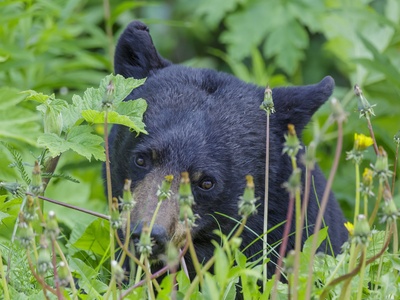
Black Bear
A large mammal of North American forests, highly adaptable. Black bears are excellent climbers and swimmers, using their acute sense of smell to find food. Despite their name, their fur can be brown, cinnamon, or even white, and they can run up to 35 mph.
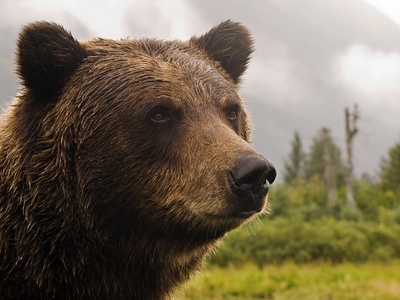
Grizzly Bear
A powerful subspecies of brown bear found in forests and mountains. Grizzlies are recognized by a prominent shoulder hump, which is a mass of muscle used for digging. They are apex omnivores, capable of taking down large prey but also subsisting largely on vegetation.
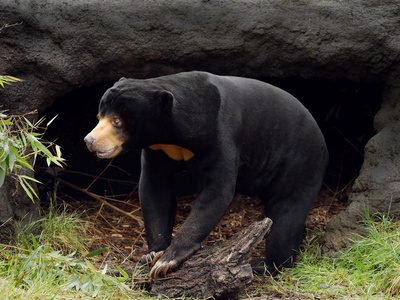
Sun Bear
The world’s smallest bear species, perfectly adapted for life in tropical rainforests. It has a distinctive orange-to-cream colored patch on its chest and an exceptionally long tongue for extracting insects and honey. Sun bears are primarily nocturnal and arboreal, building nests in trees.
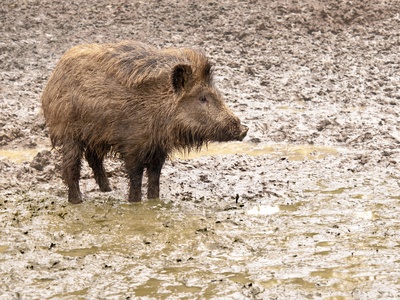
Wild Boar
A highly adaptable and intelligent pig species found in deciduous and mixed forests. They use their tough snout to root through the forest floor for food, significantly impacting soil and vegetation. They live in social groups called sounders, led by an older sow.
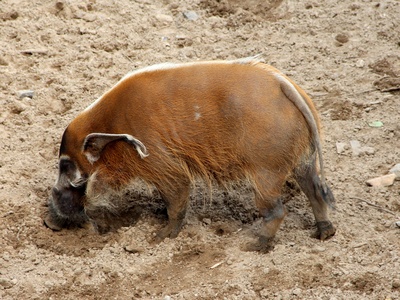
Red River Hog
A strikingly colorful wild pig that inhabits dense rainforests, often near rivers. With its bright reddish-brown fur, white dorsal stripe, and long ear tufts, it is one of the most vibrant pig species. They are social animals, living and foraging in small groups.
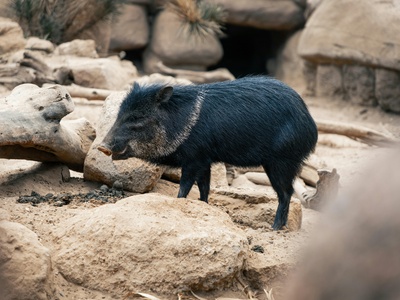
Collared Peccary
A pig-like mammal found in diverse forest habitats. Though they resemble pigs, peccaries belong to a different family. They are social animals that travel in herds, using scent glands on their rumps to mark territory and identify group members.
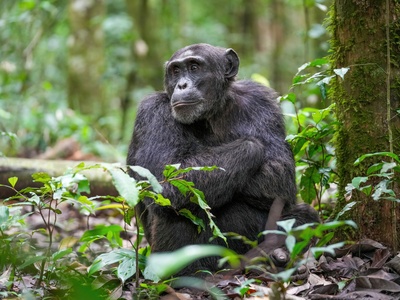
Chimpanzee
Our closest living relative, known for its high intelligence and complex social structures. Chimpanzees live in large communities and are one of the few animals to create and use tools, such as using sticks to fish for termites or stones to crack nuts.
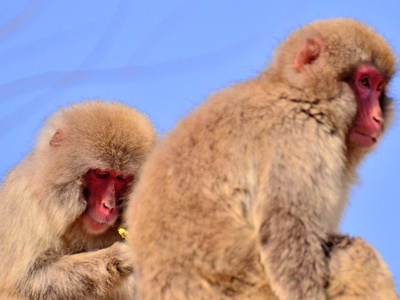
Japanese Macaque
Also known as the snow monkey, this primate is famous for surviving harsh, snowy winters. They inhabit a range of forest types, from subtropical to subalpine. Some troops have famously learned to wash their food and warm up in natural hot springs.
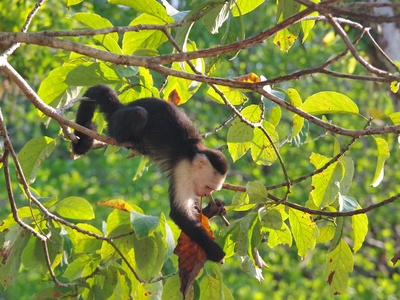
White-faced Capuchin
A highly intelligent and social New World monkey inhabiting rainforests. Capuchins are renowned for their problem-solving skills and use of tools, such as using stones to crack open hard-shelled nuts and clams. They forage at all levels of the forest canopy.
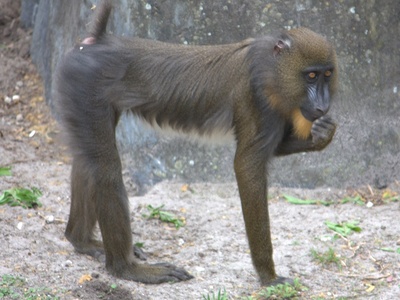
Mandrill
The world’s largest monkey, famous for the male’s vibrant blue and red facial coloration. Mandrills are terrestrial, foraging on the forest floor in huge groups called hordes, which can number over 600 individuals. Their bright colors are linked to social status.
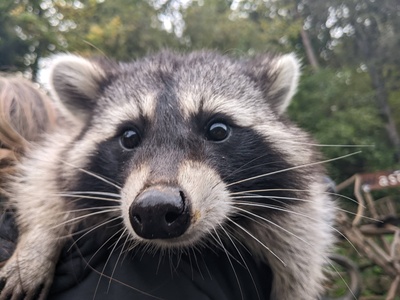
Raccoon
A highly adaptable, nocturnal mammal known for its masked face and ringed tail. Raccoons are excellent climbers and have dexterous front paws, which they use to forage for a wide variety of foods in forest streams and on the forest floor.
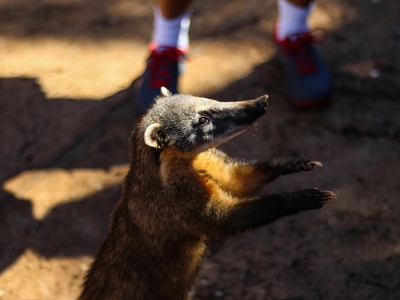
South American Coati
A member of the raccoon family, recognized by its long, flexible snout and a long, faintly ringed tail used for balance. Coatis are diurnal and forage both on the forest floor, digging for invertebrates with their claws, and in trees for fruit.
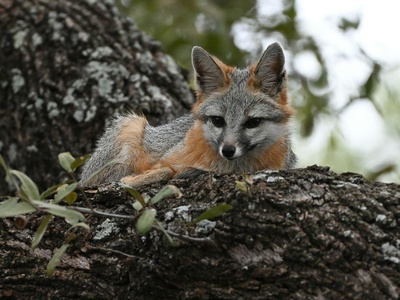
Gray Fox
One of only two canid species capable of climbing trees, which it does to escape predators or find food. The gray fox has a more varied, omnivorous diet than most other foxes, making it perfectly suited for life in dense, fruiting forests.
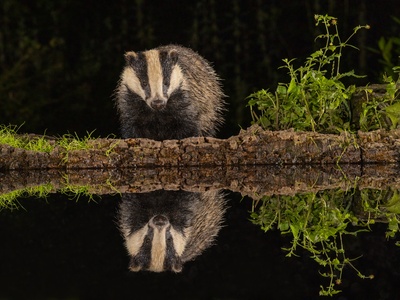
European Badger
A stocky, nocturnal mammal known for living in extensive underground burrow systems called setts. Badgers are social animals that live in clans and forage for a wide variety of foods, with earthworms often forming the largest part of their diet.
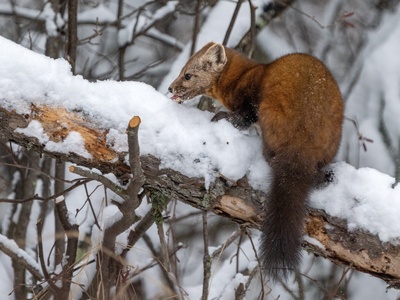
Pine Marten
A slender, agile member of the weasel family, well-adapted to life in the trees. While a skilled predator of squirrels and birds, the pine marten becomes highly frugivorous in late summer and autumn, relying on berries to build fat reserves for winter.
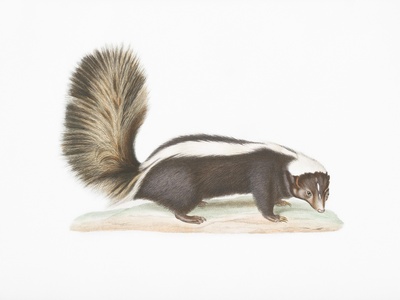
Striped Skunk
Famous for its powerful defensive spray, the striped skunk is a common nocturnal omnivore. It forages on the forest floor, using its long claws to dig for insects and grubs, which form a major part of its diet during the spring and summer months.
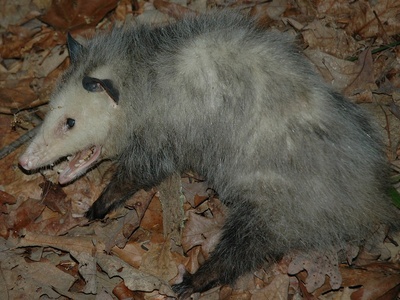
Virginia Opossum
North America’s only marsupial, known for its prehensile tail and “playing possum” defensive behavior. The Virginia opossum is a nocturnal generalist, thriving in forest environments by eating nearly anything it can find, making it a key part of the forest cleanup crew.
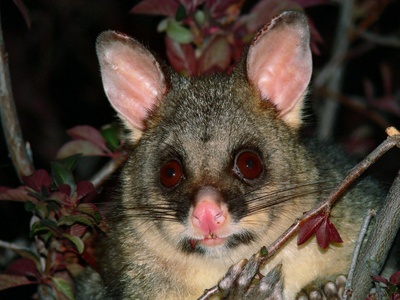
Common Brushtail Possum
A nocturnal, semi-arboreal marsupial and one of Australia’s most common mammals. It has a prehensile tail and sharp claws for climbing, spending its nights foraging in the trees of eucalyptus forests and its days sleeping in tree hollows.
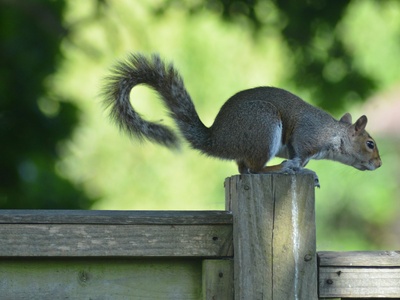
Gray Squirrel
A highly visible and energetic rodent of temperate forests. Gray squirrels are famous for scatter-hoarding nuts and acorns for winter, which plays a crucial role in forest regeneration as forgotten seeds sprout into new trees. They are agile tree-dwellers.
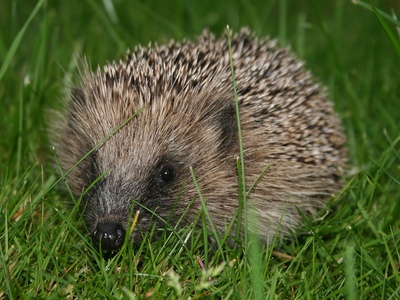
European Hedgehog
A small, spiny nocturnal mammal that forages on the forest floor. When threatened, a hedgehog rolls into a tight ball, protecting its vulnerable face and underside with a coat of up to 6,000 sharp spines. They hibernate during the winter.
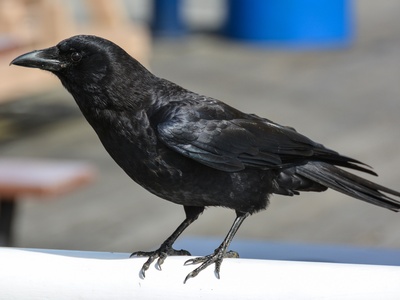
American Crow
A highly intelligent and social bird known for its problem-solving abilities and complex communication. Crows are adaptable omnivores that forage on the ground and in trees, often working together to find food or mob predators.
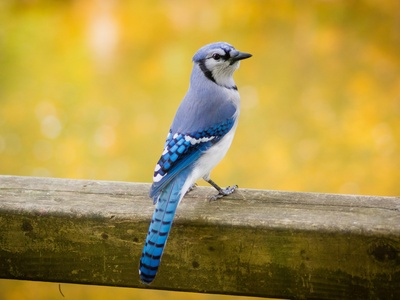
Blue Jay
A noisy and colorful corvid with a distinctive blue crest. Blue jays are known for their intelligence and for caching acorns, which contributes to the dispersal of oak trees. They can mimic the calls of hawks to scare other birds.
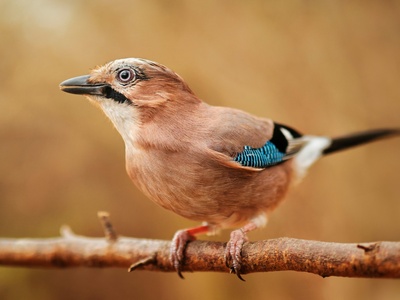
Eurasian Jay
A colorful member of the crow family, easily identified by the bright blue patch on its wings. Eurasian jays are crucial to oak forest regeneration, as an individual can bury several thousand acorns each autumn to store for the winter.
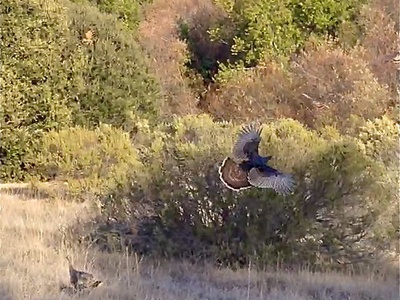
Wild Turkey
A large ground-dwelling bird that forages in flocks. Turkeys scratch at the leaf litter on the forest floor to uncover food. While they can fly, they prefer to walk or run and roost in trees at night to stay safe from predators.
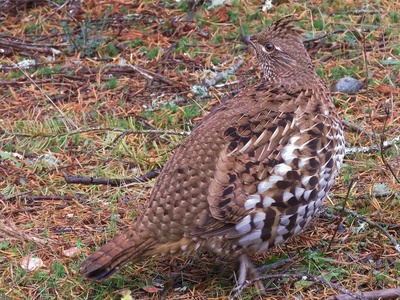
Ruffed Grouse
A medium-sized, chicken-like bird known for the male’s “drumming” display, created by beating its wings rapidly. Its diet changes seasonally, from insects and berries in the summer to the buds and twigs of aspen and birch trees in the winter.
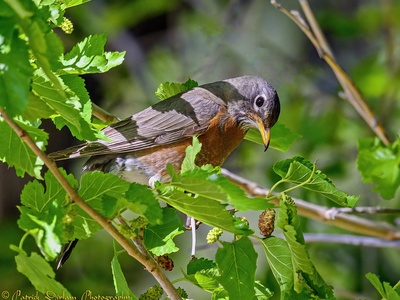
American Robin
A familiar migratory thrush, often seen hopping across open ground in search of earthworms. This seasonal shift in diet from animal protein to fruit is a classic omnivorous strategy, allowing it to thrive across a vast range and in varied habitats.
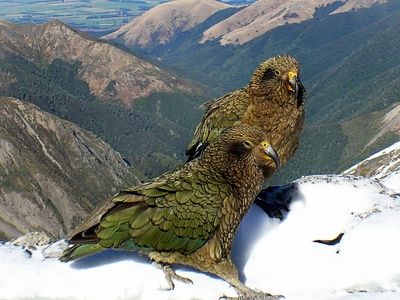
Kea
The world’s only alpine parrot, renowned for its intelligence, curiosity, and destructive behavior. Kea have adapted to a harsh mountain forest environment, using their strong beaks to dig for roots and larvae or to investigate human property.
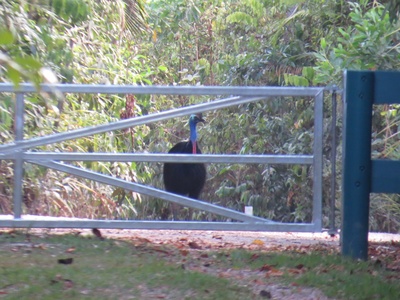
Southern Cassowary
A large, flightless bird with a distinctive bony casque on its head. The cassowary is a “keystone species” in its rainforest habitat, as it consumes large fruits and disperses the seeds over long distances, which is vital for forest diversity.
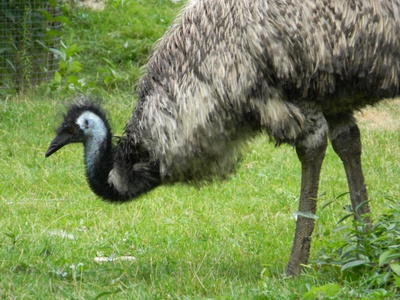
Emu
Australia’s largest bird, the emu is a nomadic, flightless omnivore that wanders the landscape in search of food. They are strong swimmers and fast runners, capable of traveling long distances. Their diet is highly varied, reflecting the seasonal availability of resources.
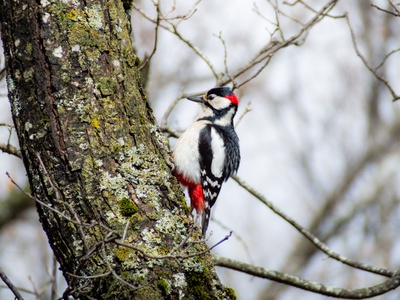
Great Spotted Woodpecker
A common and adaptable woodpecker that uses its powerful beak to drum on trees to communicate and to excavate for insects. It is a true omnivore, readily switching to nuts and seeds in winter and actively preying on the nests of smaller birds.
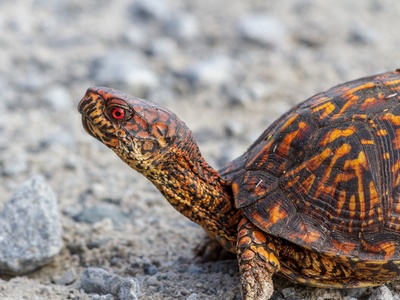
Eastern Box Turtle
A terrestrial turtle with a unique, hinged plastron (lower shell) that allows it to close up completely for protection. Its diet often shifts from being more carnivorous when young to more herbivorous as an adult, but it remains an opportunistic omnivore throughout life.
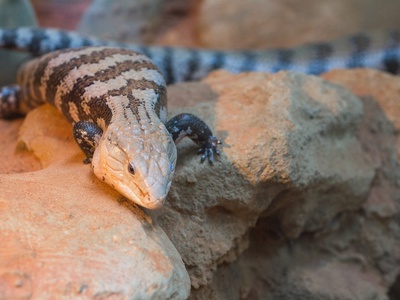
Eastern Blue-tongued Skink
A large, slow-moving lizard known for its bright blue tongue, which it flashes to startle potential predators. It forages during the day on the forest floor, using its strong jaws to crush snail shells and tough insects, supplementing its diet with vegetation.
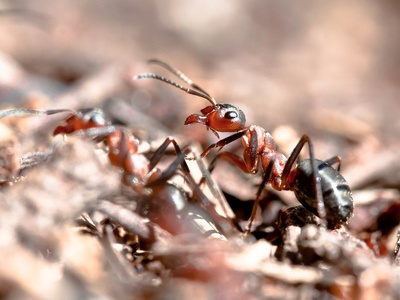
Red Wood Ant
A social insect that builds large, conspicuous nest mounds on the forest floor from twigs and pine needles. These ants are keystone species, preying on vast numbers of forest insects and “farming” aphids for their sugary honeydew, defending them from other predators.
